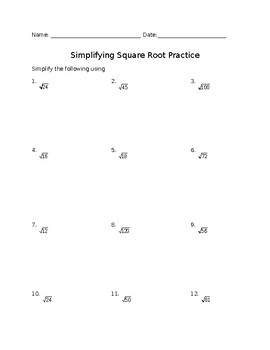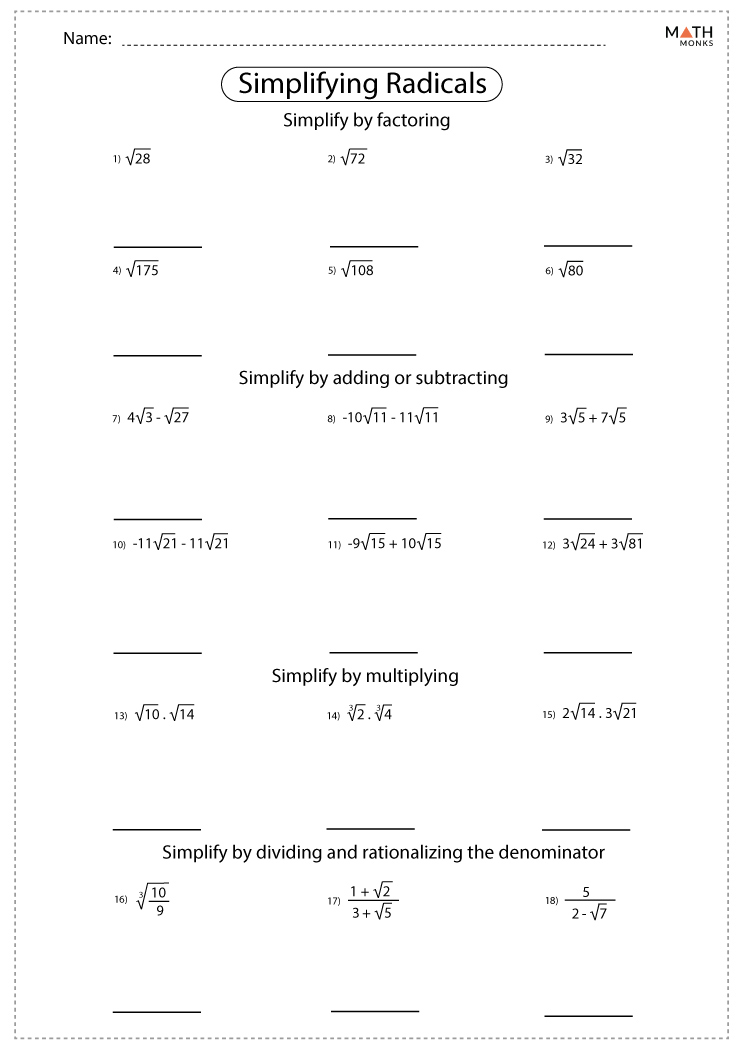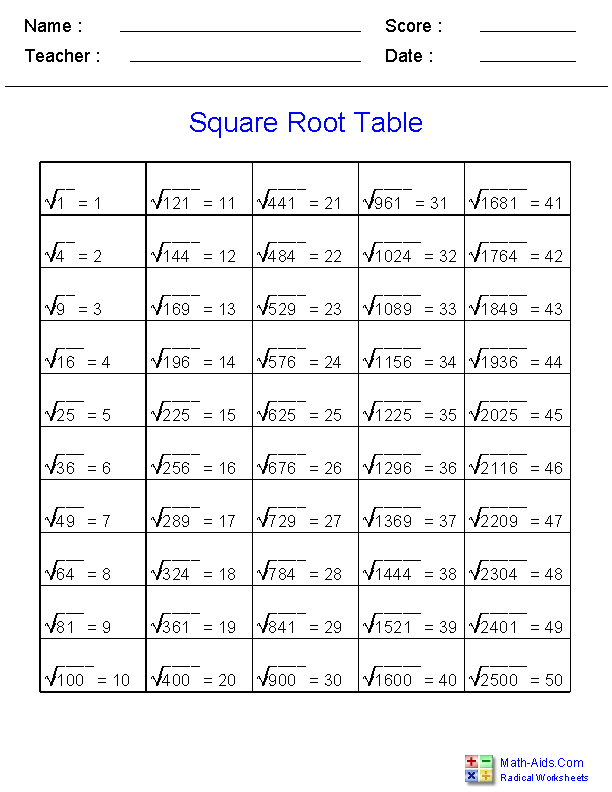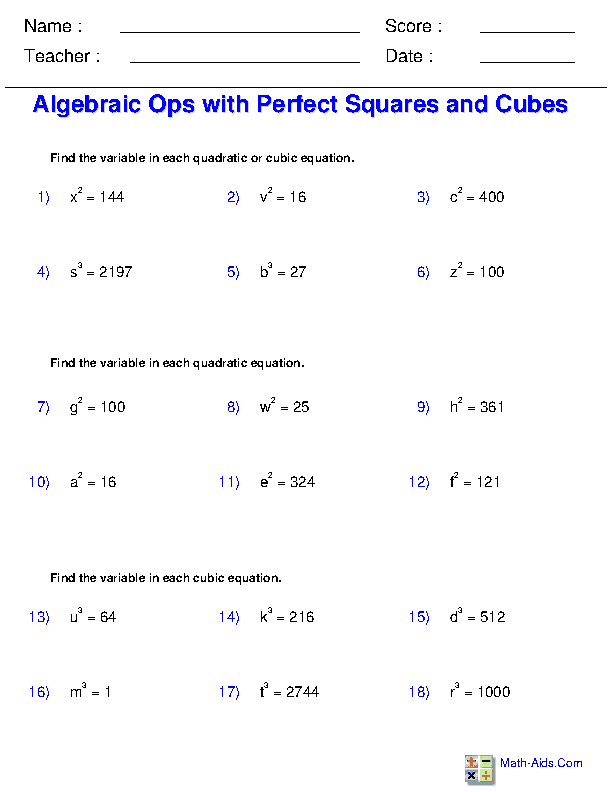Topic square root of 20 radical form: The square root of 20 in its radical form offers a fascinating glimpse into the world of mathematics. Simplifying √20 not only enhances our understanding of radicals but also aids in various practical applications. Dive into this guide to learn how to express and simplify the square root of 20 effectively and explore its significance in everyday math.
Table of Content
- Square Root of 20 in Radical Form
- Introduction to Square Roots
- Basics of Radical Expressions
- Understanding the Square Root of 20
- How to Simplify the Square Root of 20
- Step-by-Step Simplification Process
- Expressing Square Root of 20 in Simplest Radical Form
- Visualizing the Square Root of 20
- Approximation of the Square Root of 20
- Applications of Square Roots in Real Life
- Practice Problems for Square Root of 20
- Frequently Asked Questions about Square Roots
- Conclusion and Key Takeaways
- YOUTUBE:
Square Root of 20 in Radical Form
The square root of 20 can be simplified using the prime factorization method. The steps involved are detailed below:
Prime Factorization Method
- First, express 20 as a product of its prime factors: \( 20 = 2 \times 2 \times 5 \).
- Then, simplify the square root of 20 using these factors: \( \sqrt{20} = \sqrt{2 \times 2 \times 5} \).
- Since 2 is a pair, it can be taken out of the radical: \( \sqrt{20} = 2 \sqrt{5} \).
Therefore, the simplest radical form of the square root of 20 is \( 2 \sqrt{5} \).
Long Division Method
The long division method provides a numerical approximation of the square root:
- Through successive steps, this value is found by dividing and averaging.
Examples
Here are some practical examples of using the square root of 20:
- Example 1: If Judy has a square-shaped room with an area of 20 square feet, the length of the room's floor is \( \sqrt{20} \approx 4.47 \) feet.
- Example 2: For a circle with an area of \( 20\pi \) square inches, the radius is \( \sqrt{20} \approx 4.47 \) inches.
FAQs
- What is the value of the square root of 20? The square root of 20 is approximately \( 4.472135955 \).
- Why is the square root of 20 an irrational number? The prime factor 5 in \( \sqrt{20} = 2 \sqrt{5} \) is not paired, making \( \sqrt{5} \) irrational.
- Is 20 a perfect square? No, because its prime factorization \( 2^2 \times 5 \) includes an unpaired 5.
Mathematical Representation
The square root of 20 in simplest radical form is:
\[ \sqrt{20} = 2 \sqrt{5} \]
Additional Information
For more detailed steps on finding the square root of 20 and other related problems, you can visit various math educational websites.

READ MORE:
Introduction to Square Roots
The concept of square roots is fundamental in mathematics and is used to find a number that, when multiplied by itself, gives the original number. For example, the square root of 16 is 4 because \( 4 \times 4 = 16 \). In this section, we will delve into the basics of square roots, explore their properties, and understand how they are expressed, especially in their radical form.
Square roots are often represented using the radical symbol \( \sqrt{} \). The number under the radical sign is called the radicand. For example, in \( \sqrt{20} \), 20 is the radicand.
Here’s a step-by-step guide to understanding square roots:
- Definition: The square root of a number \( x \) is a number \( y \) such that \( y^2 = x \).
- Notation: The square root is denoted by the radical symbol \( \sqrt{} \). For example, \( \sqrt{25} = 5 \).
- Positive and Negative Roots: Every positive number has two square roots: one positive and one negative. For instance, both 4 and -4 are square roots of 16.
- Perfect Squares: Numbers like 1, 4, 9, 16, 25, etc., are called perfect squares because they are squares of integers.
- Non-Perfect Squares: Numbers like 2, 3, 5, 20, etc., are not perfect squares and their square roots are irrational numbers, meaning they cannot be expressed as a simple fraction.
- Simplification: Square roots can often be simplified by factoring the radicand into its prime factors and pairing identical factors.
Let’s look at a few examples:
| \(\sqrt{16}\) | Since \( 4 \times 4 = 16 \), the square root of 16 is 4. |
| \(\sqrt{25}\) | Since \( 5 \times 5 = 25 \), the square root of 25 is 5. |
| \(\sqrt{20}\) | Since 20 is not a perfect square, we can simplify it as \( \sqrt{4 \times 5} = 2 \sqrt{5} \). |
Understanding square roots is crucial for grasping more complex mathematical concepts and solving problems involving radicals.
Basics of Radical Expressions
Radical expressions are mathematical expressions that include a root, such as a square root, cube root, or any higher-order root. The term "radical" refers to the radical symbol \( \sqrt{} \), used to indicate the root of a number. Understanding radical expressions is essential for simplifying and solving various mathematical problems.
Here’s a detailed look at the basics of radical expressions:
- Components of a Radical Expression:
- Radical Sign: The symbol \( \sqrt{} \) is known as the radical sign.
- Index: The small number written just above and to the left of the radical sign indicates the degree of the root. For square roots, the index is 2 (usually not written), while for cube roots, the index is 3, and so on.
- Radicand: The number or expression inside the radical sign. For example, in \( \sqrt[3]{27} \), 27 is the radicand.
- Types of Roots:
- Square Roots: The most common type, represented by \( \sqrt{x} \). It finds a number which, when multiplied by itself, equals \( x \).
- Cube Roots: Represented by \( \sqrt[3]{x} \), it finds a number which, when multiplied by itself three times, equals \( x \).
- Higher-order Roots: Roots like fourth, fifth, etc., are represented by \( \sqrt[n]{x} \), where \( n \) is the index.
- Simplifying Radical Expressions:
Simplifying a radical involves expressing it in its simplest form. This usually means factoring the radicand into its prime factors and simplifying the expression by removing pairs of factors.
Example: Simplify \( \sqrt{20} \).
- Factorize the radicand: \( 20 = 4 \times 5 \).
- Identify perfect square factors: \( \sqrt{4 \times 5} \).
- Simplify by taking the square root of the perfect square: \( \sqrt{4} \times \sqrt{5} = 2 \sqrt{5} \).
- Operations with Radical Expressions:
- Addition and Subtraction: You can add or subtract radicals only if they have the same radicand and index. For example, \( 3\sqrt{5} + 2\sqrt{5} = 5\sqrt{5} \).
- Multiplication: Multiply the coefficients and the radicands separately. For example, \( \sqrt{3} \times \sqrt{12} = \sqrt{36} = 6 \).
- Division: Divide the coefficients and the radicands separately. For example, \( \frac{\sqrt{20}}{\sqrt{5}} = \sqrt{\frac{20}{5}} = \sqrt{4} = 2 \).
- Rationalizing the Denominator:
This involves rewriting a radical expression so that there are no radicals in the denominator. To do this, multiply both the numerator and the denominator by a value that will eliminate the radical in the denominator.
Example: Rationalize \( \frac{1}{\sqrt{5}} \).
- Multiply by \( \frac{\sqrt{5}}{\sqrt{5}} \): \( \frac{1}{\sqrt{5}} \times \frac{\sqrt{5}}{\sqrt{5}} = \frac{\sqrt{5}}{5} \).
Understanding and mastering the basics of radical expressions is essential for progressing in algebra and other higher-level math courses. It allows for simplifying and solving more complex equations efficiently.
Understanding the Square Root of 20
The square root of 20, represented as \( \sqrt{20} \), is an example of a non-perfect square. It’s a value that, when multiplied by itself, gives the product 20. This section explores the nature of \( \sqrt{20} \), how to simplify it, and its significance in mathematical expressions.
Here’s a detailed breakdown to understand the square root of 20:
- Nature of \( \sqrt{20} \):
The number 20 is not a perfect square, meaning there is no integer that, when squared, equals 20. Therefore, \( \sqrt{20} \) is an irrational number, which cannot be expressed as a simple fraction and has a non-repeating, non-terminating decimal expansion.
- Simplifying \( \sqrt{20} \):
To simplify \( \sqrt{20} \), we break down 20 into its prime factors and look for perfect squares within those factors. Here’s how to do it step by step:
- Factorize the number 20 into its prime factors: \( 20 = 2^2 \times 5 \).
- Identify the perfect square in the factorization: \( 2^2 = 4 \).
- Rewrite \( \sqrt{20} \) using the perfect square: \( \sqrt{20} = \sqrt{4 \times 5} \).
- Separate the perfect square from the rest: \( \sqrt{4} \times \sqrt{5} = 2 \sqrt{5} \).
Therefore, the simplified form of \( \sqrt{20} \) is \( 2 \sqrt{5} \).
- Decimal Approximation of \( \sqrt{20} \):
Although \( \sqrt{20} \) is best expressed in its simplified radical form \( 2 \sqrt{5} \), it can also be approximated as a decimal for practical use:
\( \sqrt{20} \approx 4.472 \).
This approximation is useful in real-world applications where exact values are not required.
- Visualizing \( \sqrt{20} \):
One way to understand the square root is through visualization. Consider a square whose area is 20 square units. The side length of this square would be \( \sqrt{20} \). Using the simplified form, this length is approximately \( 4.472 \) units.
- Applications of \( \sqrt{20} \):
Understanding and simplifying the square root of 20 can be applied in various mathematical and real-life contexts, such as geometry, algebra, and physics. For example, in solving quadratic equations or in calculating dimensions in geometric problems where precision is key.
By comprehending \( \sqrt{20} \) both in its simplified radical form and as a decimal approximation, you gain a deeper insight into the nature of non-perfect squares and their practical applications.
How to Simplify the Square Root of 20
Simplifying the square root of 20 involves expressing it in its simplest radical form. This process requires breaking down the number into its prime factors and identifying any perfect squares. Simplifying radicals makes them easier to work with in mathematical problems. Here’s a step-by-step guide to simplify \( \sqrt{20} \).
- Factorize the Radicand:
The first step is to factorize the number 20 into its prime factors. A prime factor is a factor that is a prime number. For 20, the prime factors are:
- 20 = 2 × 10
- 10 = 2 × 5
So, the prime factorization of 20 is \( 2 \times 2 \times 5 = 2^2 \times 5 \).
- Identify Perfect Squares:
Look for pairs of identical factors in the factorization. Perfect squares can be taken out from under the radical because they have integer square roots. In the case of 20, the number 4 (\(2^2\)) is a perfect square:
\( 20 = 4 \times 5 = 2^2 \times 5 \).
- Separate the Perfect Square:
Rewrite the square root of the product as the product of the square roots:
\( \sqrt{20} = \sqrt{2^2 \times 5} \).
Use the property \( \sqrt{a \times b} = \sqrt{a} \times \sqrt{b} \) to separate the square root of the perfect square (4) and the other factor (5):
\( \sqrt{2^2 \times 5} = \sqrt{2^2} \times \sqrt{5} \).
- Simplify the Perfect Square:
Since the square root of \( 2^2 \) is 2, simplify the expression:
\( \sqrt{2^2} = 2 \).
Therefore, \( \sqrt{20} = 2 \times \sqrt{5} \).
- Final Simplified Form:
Combine the results to get the simplified radical form of \( \sqrt{20} \):
\( \sqrt{20} = 2 \sqrt{5} \).
To summarize, the square root of 20 simplifies to \( 2 \sqrt{5} \). This process of breaking down the radicand into its prime factors and isolating perfect squares helps simplify radicals efficiently, making complex calculations more manageable.
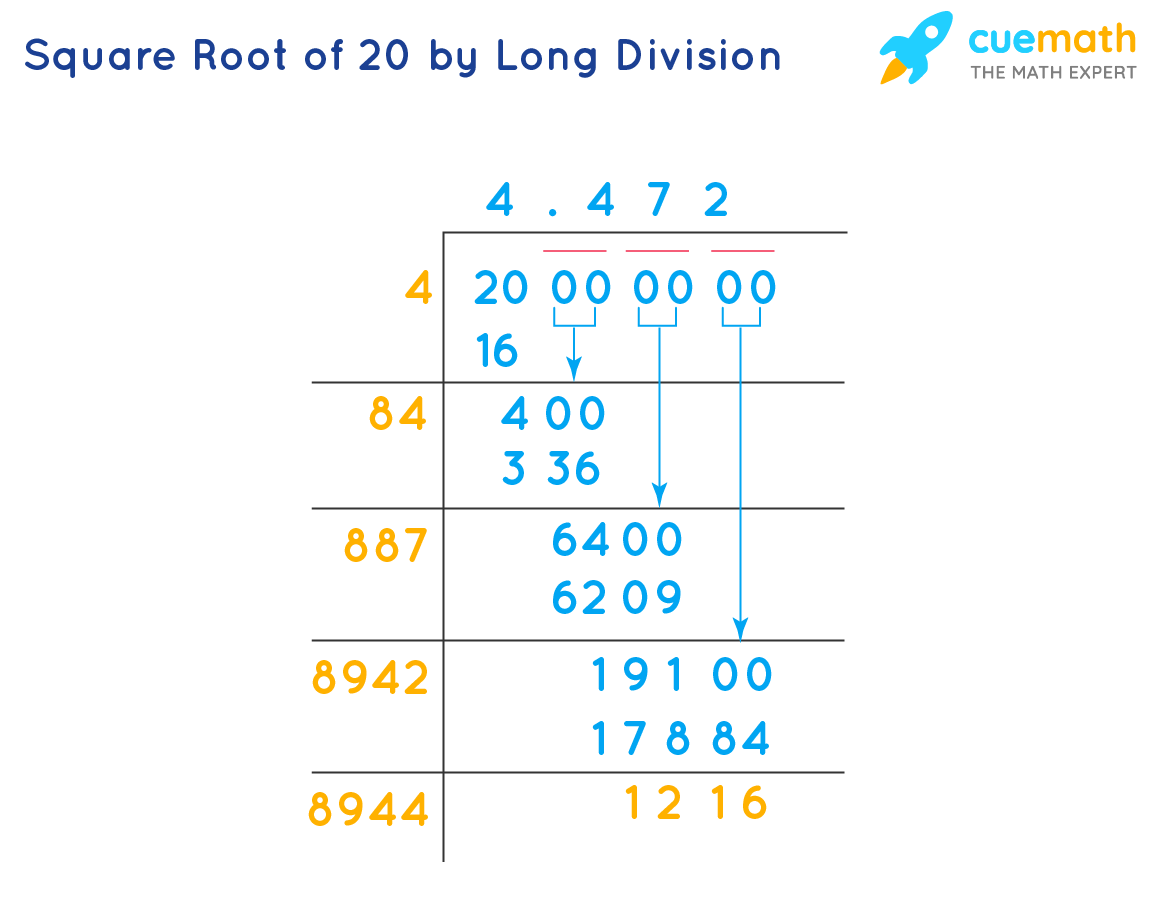
Step-by-Step Simplification Process
Simplifying the square root of 20 involves breaking down the radicand (the number under the square root symbol) into its prime factors and simplifying where possible. This method allows us to express \( \sqrt{20} \) in a more manageable form. Follow these detailed steps to simplify \( \sqrt{20} \).
- Prime Factorization:
Start by finding the prime factors of the number 20. Prime factorization involves expressing a number as a product of its prime numbers. For 20, the prime factors are:
- 20 = 2 × 10
- 10 = 2 × 5
Therefore, the prime factorization of 20 is \( 2^2 \times 5 \).
- Identify Perfect Squares:
Look for any perfect square factors among the prime factors. Perfect squares are numbers like 1, 4, 9, 16, 25, etc., which are squares of integers. In our prime factorization of 20, we identify 4 as a perfect square because \( 4 = 2^2 \).
Thus, we can rewrite 20 as \( 4 \times 5 \) or \( 2^2 \times 5 \).
- Apply the Square Root to Each Factor:
Using the property of square roots \( \sqrt{a \times b} = \sqrt{a} \times \sqrt{b} \), separate the square root into the product of the square roots of each factor:
\( \sqrt{20} = \sqrt{4 \times 5} \).
Rewrite it as:
\( \sqrt{4} \times \sqrt{5} \).
- Simplify the Perfect Square:
Since \( \sqrt{4} = 2 \), replace \( \sqrt{4} \) with 2:
\( \sqrt{4} \times \sqrt{5} = 2 \times \sqrt{5} \).
- Combine the Factors:
After simplifying the perfect square, combine the results to get the simplified form of \( \sqrt{20} \):
\( \sqrt{20} = 2 \sqrt{5} \).
In conclusion, the square root of 20 simplifies to \( 2 \sqrt{5} \). This simplified form is much easier to work with in mathematical calculations. By breaking down the radicand into its prime factors and simplifying perfect squares, we make radical expressions more manageable.
Expressing Square Root of 20 in Simplest Radical Form
To express the square root of 20 in its simplest radical form, we need to simplify it by finding its prime factors and isolating any perfect squares. Simplifying radicals allows us to work with easier and more concise forms in calculations. Follow these steps to convert \( \sqrt{20} \) into its simplest radical form:
- Prime Factorization:
Start by breaking down the number 20 into its prime factors. This involves expressing 20 as a product of its smallest prime numbers:
- 20 can be divided by 2: \( 20 \div 2 = 10 \).
- 10 can also be divided by 2: \( 10 \div 2 = 5 \).
Thus, the prime factorization of 20 is \( 2 \times 2 \times 5 \) or \( 2^2 \times 5 \).
- Identify Perfect Squares:
Next, look for any perfect square factors in the prime factorization. Perfect squares are numbers like 4, 9, 16, etc., which have an integer square root. In our case, the factor 4 (\( 2^2 \)) is a perfect square:
\( 20 = 4 \times 5 \) or \( 2^2 \times 5 \).
- Separate the Square Roots:
Using the property of square roots \( \sqrt{a \times b} = \sqrt{a} \times \sqrt{b} \), we separate the square root into the product of the square roots of each factor:
\( \sqrt{20} = \sqrt{4 \times 5} \).
Rewrite this as:
\( \sqrt{4} \times \sqrt{5} \).
- Simplify the Perfect Square Root:
Since \( \sqrt{4} = 2 \), replace \( \sqrt{4} \) with 2:
\( \sqrt{4} \times \sqrt{5} = 2 \times \sqrt{5} \).
- Combine the Simplified Terms:
After simplifying the square root of the perfect square, combine the terms to get the simplest radical form of \( \sqrt{20} \):
\( \sqrt{20} = 2 \sqrt{5} \).
By following these steps, you can simplify \( \sqrt{20} \) into \( 2 \sqrt{5} \). This process of breaking down the radicand into its prime factors and simplifying perfect squares is essential for simplifying radicals and making complex calculations more manageable.
Visualizing the Square Root of 20
Understanding the square root of 20 can be enhanced by visualizing it in different contexts. Visualization helps in grasping the concept of radicals and their practical implications. Here’s how you can visualize \( \sqrt{20} \) effectively:
- Geometric Interpretation:
Imagine a square with an area of 20 square units. The side length of this square is \( \sqrt{20} \) units. To simplify this further, if we break down \( \sqrt{20} \) to \( 2 \sqrt{5} \), it means that the side length of the square is equivalent to twice the length of \( \sqrt{5} \) units.
Here’s a step-by-step visual approach:
- Draw a square.
- Mark the area of the square as 20 square units.
- Note that each side of the square measures \( \sqrt{20} \) units.
Alternatively, you can visualize this as:
- Draw a rectangle where one dimension is 2 units and the other dimension is \( \sqrt{5} \) units.
- The area of this rectangle is also 20 square units (since \( 2 \times \sqrt{5} \times \sqrt{5} = 2 \times 5 = 10 \), and twice that gives 20).
- Number Line Representation:
Visualizing \( \sqrt{20} \) on a number line can help understand its approximate value and position among integers. Here’s how you can do it:
- Find \( \sqrt{20} \approx 4.472 \) on the number line, located between 4 and 5.
- This helps in understanding that \( \sqrt{20} \) is closer to 4.5 than to 5, giving a sense of its magnitude.
By plotting \( \sqrt{20} \) on the number line, you can compare it with other nearby square roots, such as \( \sqrt{16} = 4 \) and \( \sqrt{25} = 5 \), to see how it fits in.
- Graphical Representation:
Consider plotting the function \( y = \sqrt{x} \) on a graph to see how \( \sqrt{20} \) fits within the curve. This method provides insight into how square roots grow as \( x \) increases:
- Plot the function \( y = \sqrt{x} \) on a coordinate plane.
- Find the point where \( x = 20 \). The corresponding \( y \) value will be \( \sqrt{20} \).
By observing the curve, you can see how \( \sqrt{20} \) relates to other square root values and how the function behaves overall.
- Physical Examples:
Using physical objects to represent \( \sqrt{20} \) can make the concept more tangible. For instance:
- Think of a rope or a piece of string that measures \( \sqrt{20} \approx 4.472 \) units in length. If you compare this to 4 units and 5 units, you can see that it’s slightly longer than 4 but shorter than 5.
- Consider cutting a square piece of fabric with an area of 20 square units. Each side of this fabric piece will measure \( \sqrt{20} \) units, giving a practical sense of this length.
Visualizing the square root of 20 through these methods provides a deeper understanding of its value and significance. Whether through geometry, number lines, graphs, or physical representations, these approaches can enhance your comprehension of radicals and their applications.
Approximation of the Square Root of 20
The square root of 20 is an irrational number, which means it cannot be expressed as a simple fraction and its decimal form is non-terminating and non-repeating. However, it can be approximated using various methods.
Here are the steps to approximate the square root of 20:
-
Identify Perfect Squares:
Find the two closest perfect squares between which 20 lies. In this case, 16 (42) and 25 (52) are the perfect squares.
-
Initial Approximation:
Since 20 is between 16 and 25, the square root of 20 will be between 4 and 5. To be more precise, we can start with the midpoint 4.5.
-
Refine the Approximation:
Use the method of averaging to refine the approximation. Let's test 4.5:
- Calculate \( 4.5 \times 4.5 = 20.25 \) - This is slightly more than 20.
- Try a slightly smaller number, such as 4.47: \( 4.47 \times 4.47 = 19.9809 \) - This is slightly less than 20.
- We continue this process until we get closer to the actual value.
-
Decimal Approximation:
Using a calculator, the square root of 20 is approximately \( \sqrt{20} \approx 4.4721 \).
For practical purposes, the square root of 20 is often rounded to four decimal places: 4.4721.
| Decimal Place | Approximation |
|---|---|
| 1 | 4.5 |
| 2 | 4.47 |
| 3 | 4.472 |
| 4 | 4.4721 |
Using these steps, you can see how the approximation becomes more precise. The square root of 20 is an important concept and can be approximated accurately for various practical applications.

Applications of Square Roots in Real Life
Square roots are fundamental in various fields and have numerous real-life applications. Here are some key areas where square roots, including the square root of 20, are applied:
- Engineering and Architecture: Engineers and architects use square roots to calculate distances, areas, and structural integrity. For example, in designing buildings, the Pythagorean theorem, which involves square roots, helps determine the length of sides in right-angled triangles.
- Physics: In physics, square roots are used in formulas to calculate forces, energy, and other physical properties. For instance, the formula for the period of a pendulum involves the square root of its length divided by gravitational acceleration.
- Finance: Financial analysts use square roots in risk assessment and investment analysis. The standard deviation, a measure of investment risk, involves calculating the square root of the variance of returns.
- Medicine: In medical imaging, such as MRI and CT scans, square roots are used to reconstruct images from raw data. The algorithms often involve square root calculations to enhance image clarity and detail.
- Computer Graphics: In computer graphics, square roots are used to calculate distances between points in 3D space, which is crucial for rendering realistic images and animations.
- Navigation: Navigation systems use square roots in algorithms to determine shortest paths and distances between coordinates. This is vital for GPS technology and mapping services.
- Astronomy: Astronomers use square roots to calculate distances between celestial bodies, the luminosity of stars, and orbital mechanics.
Here is a simple table illustrating how square roots apply in different fields:
| Field | Application |
|---|---|
| Engineering | Calculating structural integrity, distances, and areas. |
| Physics | Formulas for forces, energy, and pendulum periods. |
| Finance | Risk assessment and investment analysis through standard deviation. |
| Medicine | Medical imaging techniques like MRI and CT scans. |
| Computer Graphics | Calculating distances in 3D space for rendering images. |
| Navigation | Determining shortest paths and distances in GPS systems. |
| Astronomy | Calculating distances between celestial bodies and orbital mechanics. |
Practice Problems for Square Root of 20
Practicing problems involving the square root of 20 helps in understanding its properties and applications. Here are some practice problems to help you master the concept:
- Simplify the Square Root of 20:
Simplify the expression \( \sqrt{20} \) to its simplest radical form.
Solution: \( \sqrt{20} = \sqrt{4 \times 5} = \sqrt{4} \times \sqrt{5} = 2\sqrt{5} \)
- Compare the Values:
Compare the values of \( 2\sqrt{5} \) and \( \sqrt{20} \). Are they equal?
Solution: Yes, \( 2\sqrt{5} \) is the simplest form of \( \sqrt{20} \), so they are equal.
- Approximate the Value:
Approximate the value of \( \sqrt{20} \) to two decimal places.
Solution: \( \sqrt{20} \approx 4.47 \)
- Area of a Square:
Find the side length of a square if the area is 20 square units.
Solution: Side length \( = \sqrt{20} = 2\sqrt{5} \) units
- Geometry Problem:
A right triangle has one leg of 2 units and a hypotenuse of \( \sqrt{20} \) units. Find the length of the other leg.
Solution: Let the other leg be \( x \) units.
Using the Pythagorean theorem:
\[
x^2 + 2^2 = (\sqrt{20})^2 \\
x^2 + 4 = 20 \\
x^2 = 16 \\
x = \sqrt{16} = 4 \text{ units}
\] - Algebra Problem:
Solve for \( x \) in the equation \( x^2 = 20 \).
Solution:
\[
x = \pm\sqrt{20} = \pm2\sqrt{5}
\]
These problems cover different aspects of using and understanding the square root of 20. Practice solving these problems to reinforce your knowledge and problem-solving skills.
Frequently Asked Questions about Square Roots
- What is a square root?
A square root of a number is a value that, when multiplied by itself, gives the original number. For example, the square root of 25 is 5 because \(5 \times 5 = 25\).
- What is the square root of 20 in simplest radical form?
The square root of 20 in simplest radical form is \(2\sqrt{5}\). This is obtained by factoring 20 into 4 and 5, and then taking the square root of 4, which is 2.
- How do you simplify the square root of a number?
To simplify the square root of a number:
- Find the prime factors of the number.
- Group the prime factors into pairs.
- Move one factor from each pair outside the square root.
- Multiply the factors outside the square root together.
Example: Simplifying \( \sqrt{20} \)
Prime factors of 20 are 2 and 5. Grouping them gives us \( \sqrt{4 \times 5} = \sqrt{4} \times \sqrt{5} = 2\sqrt{5} \).
- Can square roots be negative?
Yes, square roots can have both positive and negative values because both \(x\) and \(-x\) squared will give \(x^2\). For example, both 3 and -3 are square roots of 9 because \(3^2 = 9\) and \((-3)^2 = 9\).
- What is the difference between a perfect square and a non-perfect square?
A perfect square is a number that is the square of an integer. For example, 16 is a perfect square because \(4 \times 4 = 16\). A non-perfect square is not the square of an integer. For example, 20 is a non-perfect square because its square root is not an integer.
- How are square roots used in real life?
Square roots are used in various fields such as engineering, physics, finance, medicine, and computer graphics to solve problems involving areas, distances, and other measurements.
- What is the square root of a negative number?
The square root of a negative number is an imaginary number. This is because no real number squared gives a negative result. For example, \( \sqrt{-1} = i \), where \(i\) is the imaginary unit.
- How do you approximate square roots?
To approximate square roots, you can use methods such as long division, estimation, or a calculator. For instance, the square root of 20 is approximately 4.47.
Conclusion and Key Takeaways
The square root of 20, expressed in its simplest radical form, offers valuable insights into the nature of irrational numbers and their applications. Here are the key takeaways from our discussion:
- The square root of 20 can be simplified by factoring the number under the radical.
- Through prime factorization, we find that 20 = 22 * 5, allowing us to express √20 as 2√5.
- Simplifying radicals involves identifying perfect squares within the radicand and extracting them.
- Visualizing the square root helps in understanding its magnitude and approximation, which is approximately 4.47.
- Square roots have practical applications in various fields such as engineering, physics, and finance.
- Practicing with problems helps in mastering the simplification and approximation of square roots.
Understanding how to simplify and work with radicals, like the square root of 20, is crucial in developing mathematical proficiency. Keep practicing and exploring to strengthen your skills and confidence in handling square roots and other radical expressions.
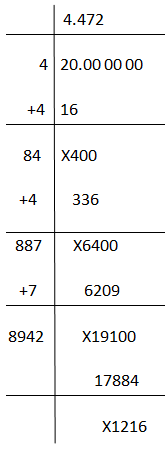
Cách Đơn Giản Hóa Căn Bậc Hai của 20: Sqrt(20)
READ MORE:
Học Cách Đơn Giản Hóa Biểu Thức Căn

